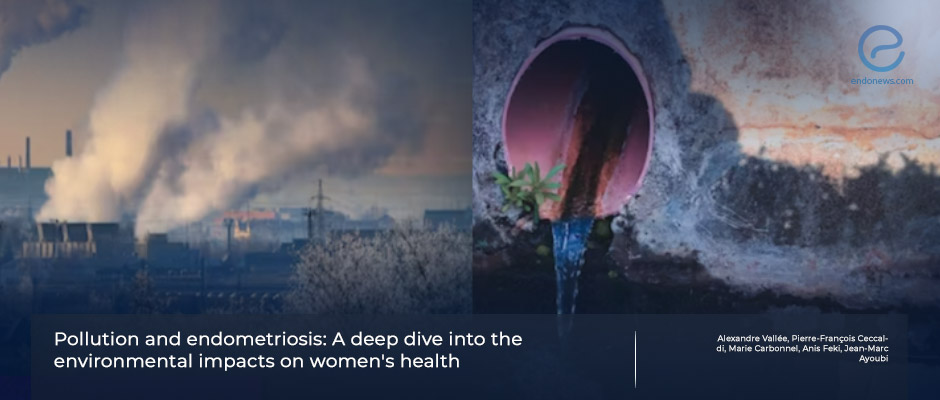Hazardous substances in pollution and relationship with endometriosis.
Nov 1, 2023
Harmful substances in the environment pose a threat to human health.
Key Points
Importance:
- The negatively contributing relationship between endometriosis and pollution necessitates an urgent consideration.
Highlights:
- Air pollution, chemical concomitants, and occupational contact with heavy metals disrupt hormonal regulation and can cause reproductive health problems, including endometriosis.
- Public health policies are necessary to protect and provide care for endometriosis patients in long-term commitment.
What's done here:
- Dr. Alexandre Vallée and his colleagues penned a narrative review about the environmental factors that contribute to the onset and severity of endometriosis.
- Related original research, reviews, meta-analyses, and case report articles in the English language from the PubMed/Medline database were searched.
- The pollution factors and endometriosis were examined under four main headings: hormonal disruption, air pollution, water pollution, and occupational hazards.
Basic outlines:
- Endocrine-disrupting chemicals observed in common pollutants have been identified as a critical component of the association between endometriosis and pollution.
- Bisphenol, organochlorine pesticides, and phthalate esters are especially important in increasing the risk of endometriosis.
- Moreover, these products have an impact on developing infertility, polycystic ovary syndrome, and even certain types of cancers.
- Two typical components of air pollution, PM2.5, and PAHs, has emerged as concerning environmental factor developing and progressing endometriosis.
- Water contamination with chemical contaminants and heavy metals can play a role in the development and progression of endometriosis.
- Professions that require close contact with heavy metals and have the potential to dysregulate hormonal balance are other endometriosis contributors.
- Preventing the development of endometriosis due to pollution also requires international studies, policies, and restrictions.
- Education, awareness, and accessible healthcare services are essential factors.
Lay Summary
Vallée and colleguages. from the Department of Epidemiology and Public Health of Foch Hospital, France, recently published a narrative review about environmental pollution and its association with endometriosis in BJOG. They used the existing English literature to discuss the association between hazardous materials and endometriosis and suggested public health policies related to the topic.
Endocrine-disrupting chemicals are synthetic compounds that can mimic, block, or alter the actions of natural hormones in the body. These chemicals are found in everyday products such as plastics, pesticides, personal care products, and industrial chemicals. Exposure can lead primarily to dysregulation of the estrogen and progesterone that are essential for the female reproductive system.
Tiny particles with a diameter of < 2.5 microns suspended in the air can originate from vehicle emissions, industrial processes, and the burning of fossil fuels. Other air-polluted materials are formed due to the combustion of organic materials, including coal, gasoline, and tobacco smoke. Air pollution can cause the progression of endometriosis. Industrial waste, improper chemical disposal, and agricultural runoff have caused intense water pollution. Heavy metals in water were studied and found to be associated with the development of endometriosis as well.
Mining, metalworking, battery manufacturing, and other industries expose workers to heavy metals, such as lead, cadmium, and mercury, which have been recognized as hormonal disruptors.
Reproductive health and environmental protection should be of interest to politicians. Policymakers can make informed decisions and prioritize measures to mitigate pollution to protect women's health. This policy should be moved to the international platform to harmonize regulations, exchange knowledge, and develop global strategies to prevent endometriosis.
"This issue requires a multi-faceted approach that stringent environmental regulations, responsible waste management, research and innovation, public awareness, and collaboration.", the authors concluded.
Research Source: https://pubmed.ncbi.nlm.nih.gov/37814514/
environmental factors air pollution water pollution endocrine-disrupting chemicals dioxins heavy metals public health endometriosis.

